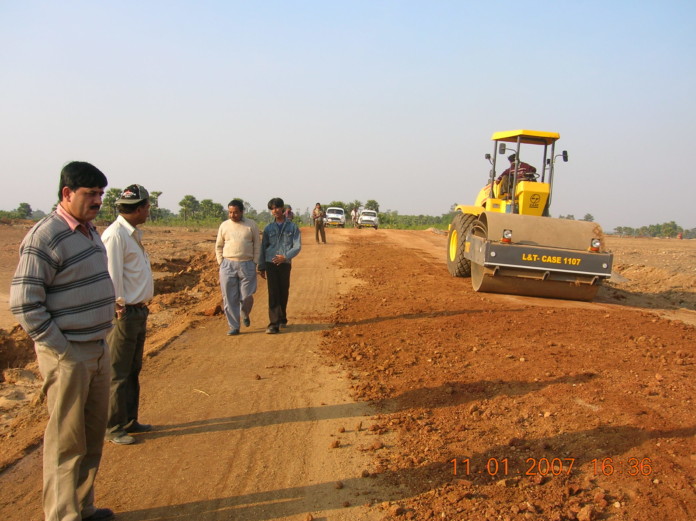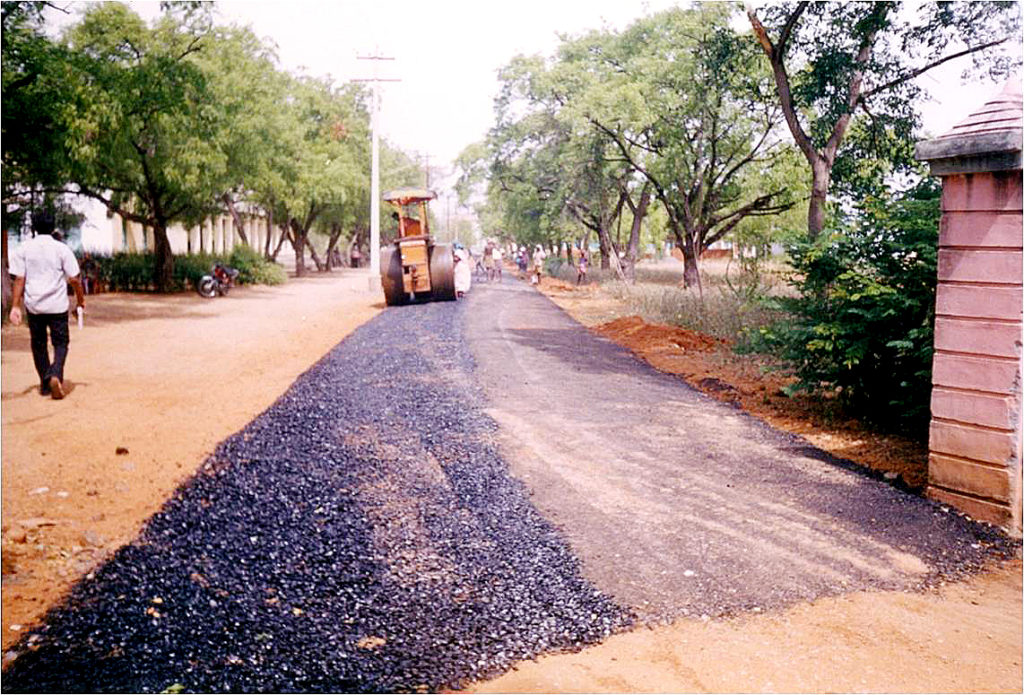Pradhan Mantri Gram Sadak Yojana
Sound infrastructure is a necessity as it impacts many other sectors in making it crucial for national development. The nature of infrastructure is such that all development projects involve huge amount
of money. An engineer once joked that the hardest part of his job was to count the zeros in such
project budgets.
India’s villages, home to two-third of the country’s population, remain largely disconnected without all-weather roads even as late as 2000. The Pradhan Mantri Gram Sadak Yojana (PMGSY) was launched to redress this with an object to provide an all-weather access to around 1.7 lakh hitherto disconnected habitations. The National Rural Road Development Agency (NRRDA) was created to oversee the implementation of the scheme under which 4,27,399 km of roads have been constructed till date (Source: Official PMGSY information portal) with a spending of Rs. 11,74,86,05,25,000. In rural areas, a road is much more than a tool for transportation; it is a lifeline that spells the difference between life and death. A road decides whether crops reach market on time or whether a woman in labour reaches the hospital on time.
Context
To bring in citizen monitoring into a complex sector such as infrastructure, Public Affairs Centre initiated a project on infrastructure monitoring of PMGSY roads in partnership with the World Bank and NRRDA in 2005. PMGSY roads were an ideal place to start, considering the dispersed nature of the project (making monitoring harder) and criticality of a rural road. A citizen friendly toolkit was developed that could be used by anyone with minimal training to test the parameters of a road. PAC initiated the process in Tamil Nadu and later in Karnataka and Orissa. The tools were tested on the field and the process was modified accordingly.
The process was then implemented on select roads in Rajasthan, Meghalaya and Jharkhand. With further improvements to the process, citizen monitoring is currently used in seven states. The process has evolved over the years and currently involves identifying volunteers through organisations with a presence at grass root level in states, training them, collecting the report on roads through them and presenting the findings to NRRDA and the various State Rural Road Development Agencies (SRRDAs) who thereafter act on the findings.
A second round of monitoring is also undertaken to study the changes or improvements that have been made on these roads. At the end of the process meetings are held in each state bringing together the government, contractors, civil society and citizens to share the findings of two rounds of citizen monitoring.
Throughout the process, a sense of ownership is instilled among villagers towards their village roads and a ‘buy-in’ is created among the villagers regarding their role in monitoring the construction and maintenance of ‘their’ roads. Awareness is also created regarding avenues for grievance redressal, putting up posters, screening of documentary films and Gram Sabhas. The larger objective is to fine tune and put in place a robust and sustainable process that could be implemented across the nation using the residents of a village to continuously monitor their own roads.
Policy Impact
A success of the programme has been that the implementing government agency has been in partnership with PAC in the pilot stage and owing to the success of the pilot projects, the government is considering a policy shift to include the citizen monitoring component within the PMGSY guidelines. PAC firmly believes that the right knowledge in the right places can do wonders. A policy change should not limit itself to inputs from intellectuals but should also be based on evidence from the grass root level.
The pilot study has identified instances where contractors have taken up and completed roadworks that were idle for months, trained volunteers were contacted by villagers from the neighbouring villages to monitor the roads , engineers from implementing agencies came with project proposals and provided reasons as to why some work was inappropriate and what action had been initiated and the volunteers have been instilled with a confidence that their voice matters and that they can create change. Citizen monitoring is an idea whose time has come.
(The author Sebin Nidhiri is a Program Officer with the Citizen Action Support Group in PAC that is working on Citizen Monitoring of PMGSY roads. He tweets at @sebinbn)
Republished with permission from Aditi (January 2016), a publication of CSTEP











